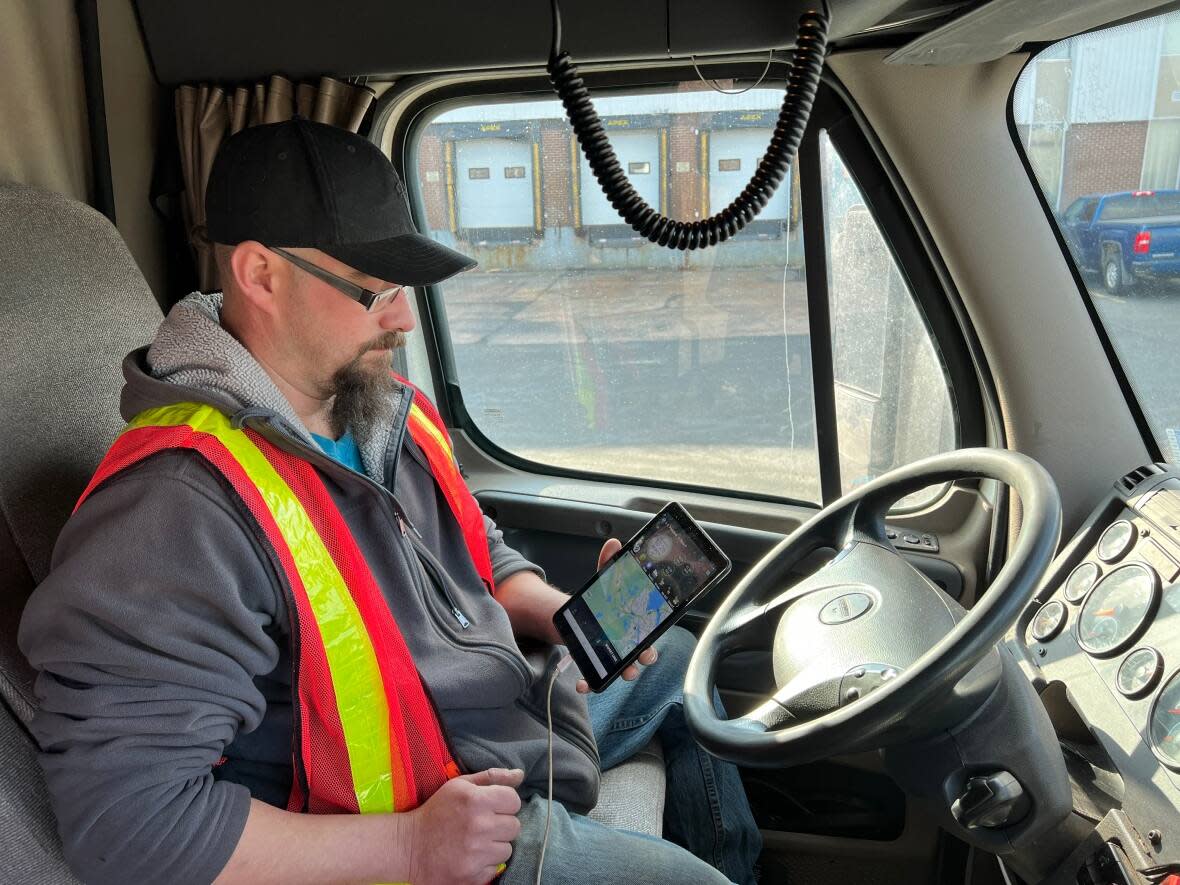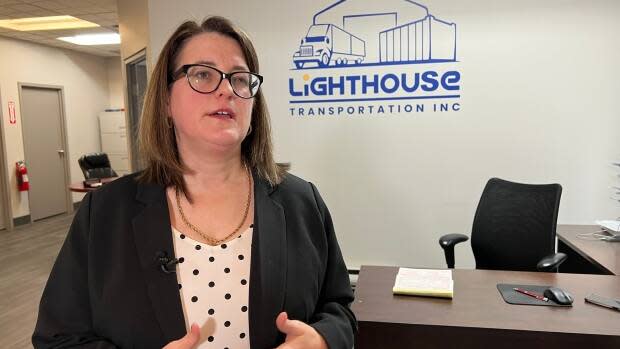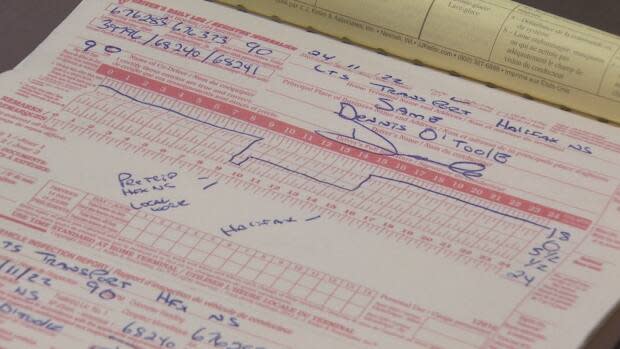N.S. trucking industry switches gears to electronic logs for tracking hours on the road

Drivers of commercial trucks and buses that move across Canada will no longer be filling out paper logbooks to document their time behind the wheel.
As of Jan. 1, a new measure took effect in Nova Scotia, requiring electronic logging devices to be installed.
The change applies to all federally regulated commercial vehicles as another way to improve safety by making sure drivers stay within their legally allowed hours on the road.
"I think for the public it gives them reassurance that there are more trucks that are being careful with their hours and making the roads safer," said Colleen O'Toole, the CEO of Lighthouse Transportation Inc.
Her company has been operating for 40 years in Halifax — transporting everything from steel to wine across the country — and started using the devices in February 2021.

The additional cost has been offset by a number of benefits.
"You would have to hire a staff person or use a staff person's time to go through the paper logs," O'Toole explained. "In the e-logs, it is right there in front of you, it will highlight red if a driver forgot to sign his log or did not put in his ending odometer reading."
Moving to electronic logging devices was a recommendation from the Saskatchewan coroner's service following the crash involving the Humboldt Broncos junior hockey team in 2018. Sixteen people died when the team bus collided with a transport truck.
In the past, the federal government has noted some inaccuracies with paper logs.
There are now 55 electronic devices that are tamper-resistant and approved for use as a way to ensure drivers do not stay on the road beyond federal regulations. Those mandate a maximum of 13 hours behind the wheel in a day, with at least eight hours rest before drivers can get back on the road.

"It's basically foolproof. Your driving experience now is easier. There are no questions, there is no way you can get a fine because you cannot mess up your logbook," said Chris Peckford, a driver with Lighthouse Transportation.
The device Peckford uses is a tablet that is connected to computers back at the company's base showing where he is at all times through GPS.
He likes that, too, in case he breaks down or needs help.
Nova Scotia to focus on education not penalties
Drivers who stay within the province or travel less than a 160-kilometre radius from their base will not be required to install the devices.
The Nova Scotia government estimates the new rule will affect about 157,000 vehicles across the country.
Most of those operating in the province have also already made the switch, according to the Atlantic Provinces Trucking Association.
"For the small percentage of carriers or drivers that are skirting the hours of service regulations, this will just make it much harder for them to do so and they will have to commit to compliance," said Chris McKee, the association's executive director.
Nova Scotia said it has been working with the industry to prepare drivers for the change for more than a year. It will send motor vehicle inspectors to check commercial drivers' hours of service.
The focus for violations will be education, not penalties, during the first months of implementation.
MORE TOP STORIES


